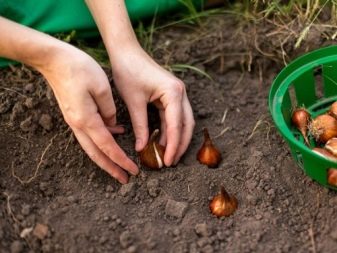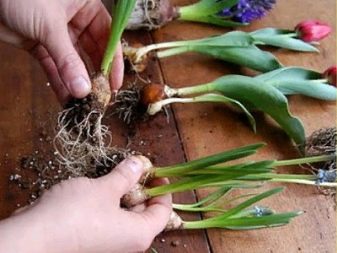Tulips "Dynasty": description and rules of cultivation

A tulip is a flower that gardeners love to plant in their plots. One of the most popular varieties is the "Dynasty" variety, the description and rules of cultivation of which are given below.

A bit of history
Tulips belong to the genus of bulbous perennials of the Liliaceae family. The homeland of these beautiful flowers is considered to be the mountainous regions in the north of Iran, the Pamir-Altai system and the Tien Shan mountains located in Central Asia. Tulips were first cultivated as home garden plants in the Middle East.
The name of the flower comes from the Turkish word "turban", which, in turn, is derived from the name of the fabric used for this headdress. Nowadays, tulips as an ornamental bulbous culture are widespread throughout the world. The Netherlands has been the leader in the cultivation and export of these flowers for many hundreds of years, where there are huge plantations of these plants, breeding farms, and flower auctions.



Characteristics of the "Triumph" class
Breeders bred these amazing unpretentious flowers at the beginning of the 20th century, crossing Darwin's hybrids and simple early tulips. The resulting plants had an attractive goblet flower shape and grew 60–80 centimeters in height. The color palette of this class of tulips today includes almost all existing shades, except for blue. They are characterized by the presence of several peduncles (from one to five), strong tall stems, large simple or double goblet buds that never fully open.
Tulips "Triumph" are very loved by florists and flower growers, on Dutch plantations 50% of plants belong to this class, which is not surprising, since these flowers look spectacular on flower beds, and on alpine hills, and near tree trunks and shrubs.



Description of the variety
These flowers belong to one of the most popular classes of tulips "Triumph". They have simple goblet inflorescences up to 8 centimeters in height and up to 6 centimeters in diameter, painted at the base of the petals in white, which smoothly turns into a delicate pink hue. The bottom and anthers are yellow. Leaves are medium in size, wide, light green, look perfect with pink flowers. Rounded bulbs are medium in size.
"Dynasty" is one of the early flowering tulip varieties with strong peduncles up to 60 centimeters in height, resistant to gusts of wind and rain.
This variety is also appreciated for long standing in cut form, winter hardiness and resistance to variegation virus.


How to grow and care properly?
Despite the fact that these flowers are considered unpretentious and do not require special care, before planting should carefully study the recommendations of experienced gardeners.
- Landing place. Tulips should be planted in an open, sunny place, preferably calm. They thrive with little shade and can be planted next to trees and shrubs that have late leaves.
- Planting process. Bulbs of this variety are best planted in the fall, at the end of September, in light sandy or loamy soil, which must be dug deep. Soils with stagnant groundwater are not suitable for these colors. A month before planting, humus or compost is introduced into the ground (two buckets per square meter). The temperature of the earthen soil should be about +10 degrees Celsius.The bulbs are planted to a depth of 10-15 centimeters at a distance of 5-10 centimeters if the bulbs are medium-sized, and 20 centimeters if the bulbs are large. You can plant in early spring, after the snow melts, but then the tulips will bloom later and will have small buds this year.
- Watering. During the budding and flowering period, tulips are watered abundantly and regularly in the early morning or evening. The water should be settled and not cold. In this case, it is necessary to avoid splashing water on the leaves. After each watering, the soil near the plant should be loosened so that air can flow to the roots, and the moisture does not evaporate too quickly.
- Top dressing. During the growing season, it is recommended to apply mineral fertilizers several times: in early spring, during the formation of buds and after the end of flowering. You cannot use fertilizers with a large amount of chlorine: it damages the roots of these flowers. If you have already applied organic fertilizers to the ground, then the amount of mineral fertilizing should be minimal.
- Reproduction... In order for the plant to form full-fledged bulbs, after flowering, the seed heads should be removed. These flowers are easy to propagate with bulbous babies, which are easily separated from the mother's bulb when excavated. It is advisable to dig up varietal tulips every year so that the flowers remain as large. Removing the bulbs can begin after the leaves turn yellow and the bulb scales turn brown (around the end of June).
- Storage... After digging the bulbs, it is recommended to dry for 7-10 days at a temperature of about + 21-25 degrees Celsius, then they should be separated from each other and sorted by size. Next, you need to remove the earth, dead roots, old scales. Sick and damaged bulbs must be destroyed. Bulbs should be stored at a temperature of + 20-23 degrees Celsius, out of sunlight, in well-ventilated sheds or attics until the end of August. Then the bulbs are kept at + 15-17 degrees before planting in the soil, it is advisable to treat them with fungicides to prevent the occurrence of diseases.
- Wintering in the soil. If you decide to leave the tulips for the winter, but are not sure that there will be enough snow cover, mulch with peat, sawdust, straw, compost. The height of the shelter should be between 6 and 14 centimeters. Mulch should be done only after stable soil freezing.
Removal of protective elements is carried out in the spring, immediately after the snow melts.




Tulips are adorable spring flowers that you can't help but admire. Dynasty flowers are especially delicate and exquisite. Plant them in your garden so that they bloom brightly every spring and give you a lot of positive emotions.


How to transplant tulips is described in the next video.







































































































I believe that a tulip must definitely overwinter - growth hormone is formed in the cold, so tulips do not grow where it is always summer. Another myth is to plant tulips in the fall. In autumn, they take root, and it is best to plant them immediately after digging, drying, separating, cleaning from old scales. The soil is the native element of the tulip, and in it the bulbs will be much better preserved until autumn, rather than store them somewhere (they can dry out).
The comment was sent successfully.